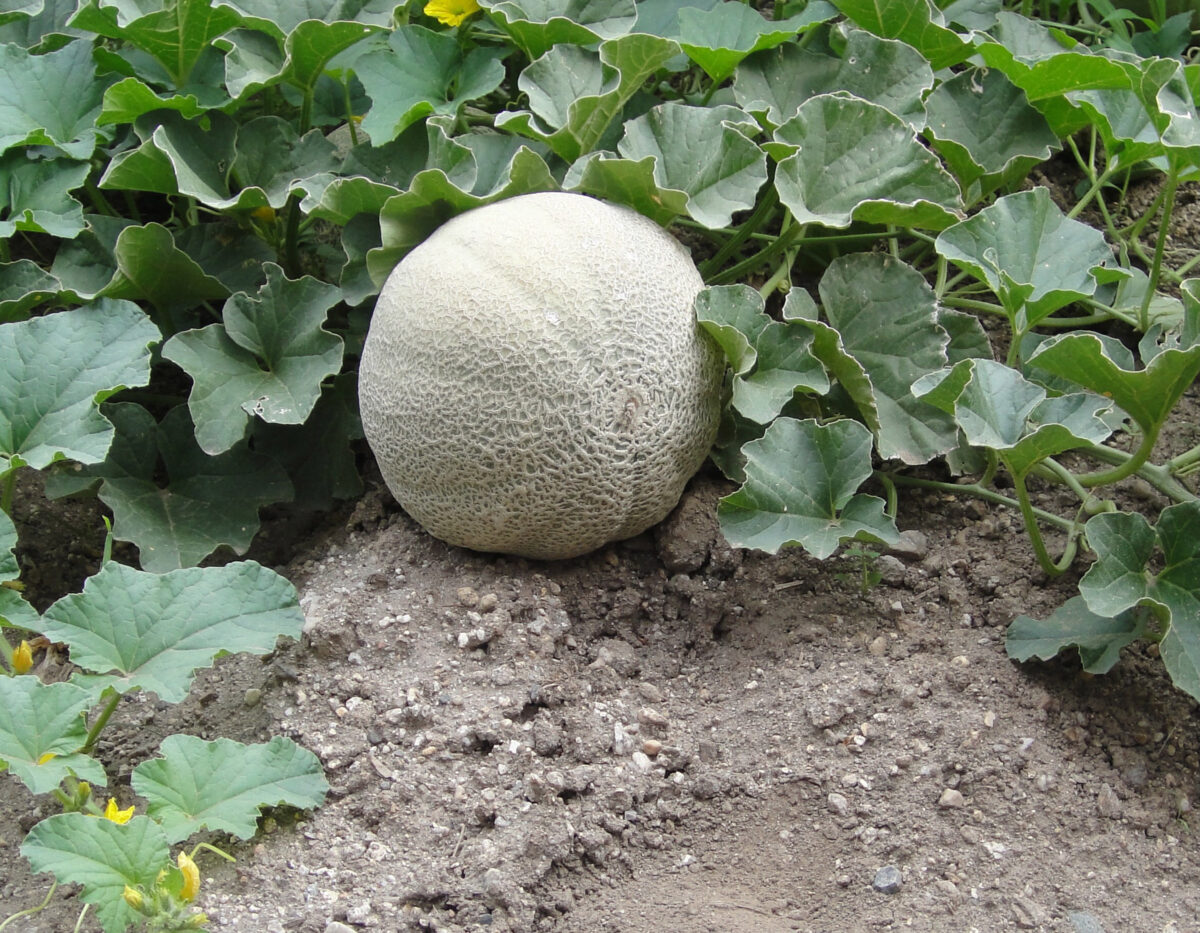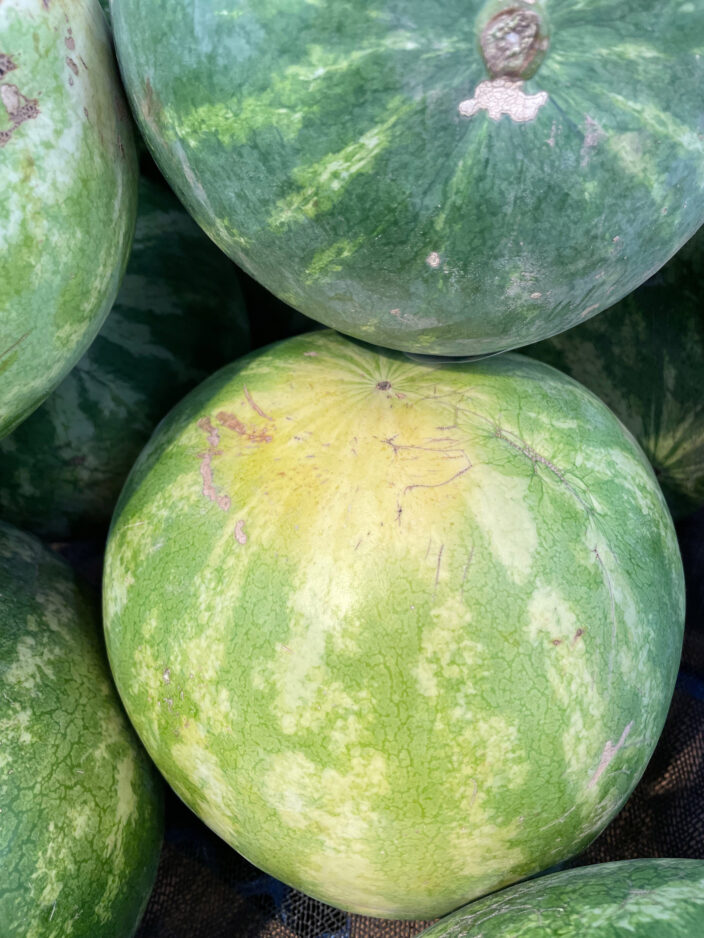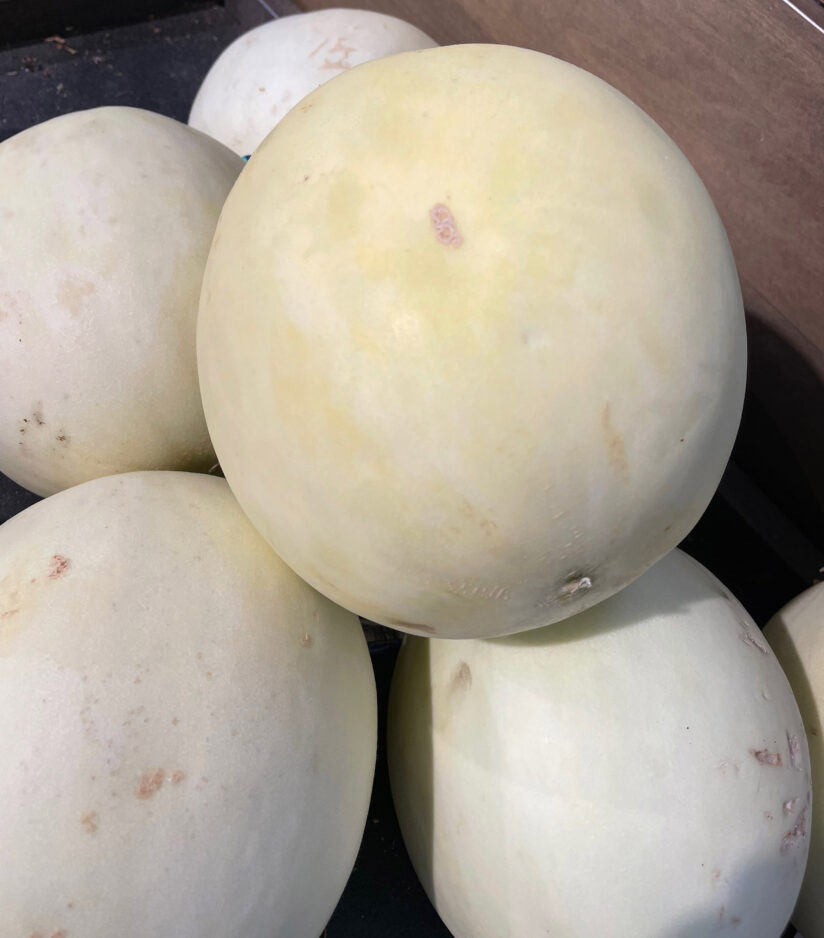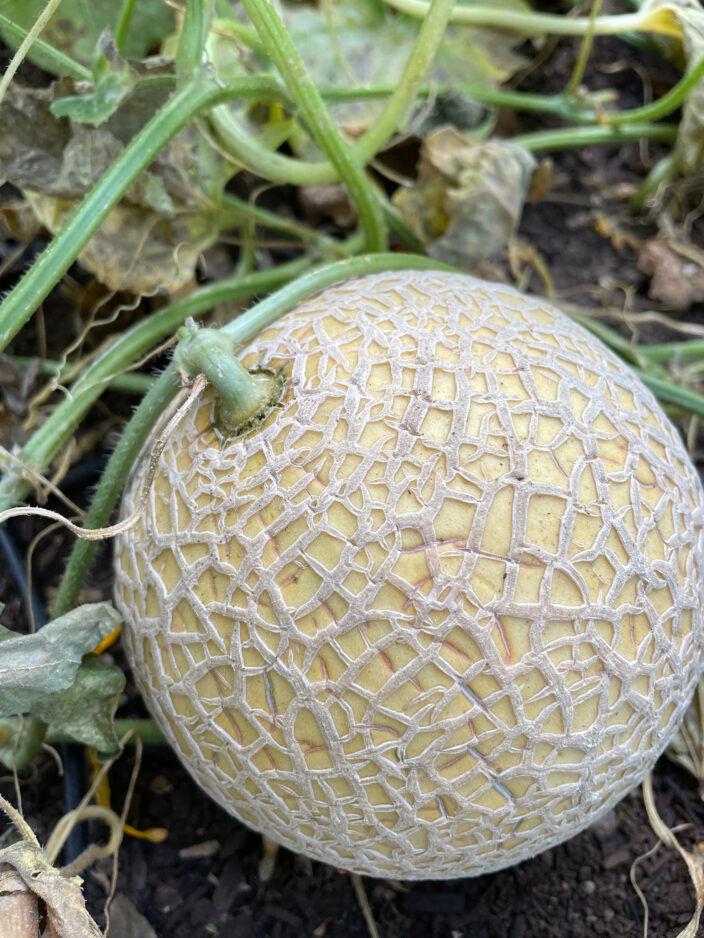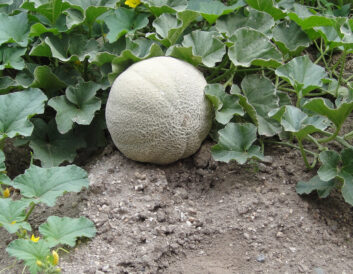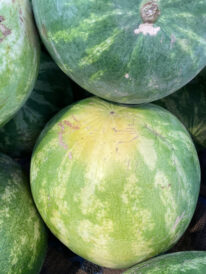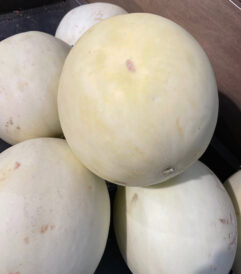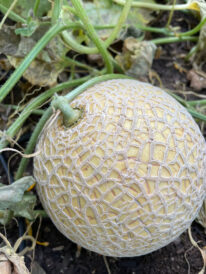Garden Help Desk: Various signs show when melons are ready to be picked
- This cantaloupe is nearly ready to be picked. The netting on the skin is an even tan color and the rind under the netting is changing from green to tan. In just a day or two, this melon will be ready to be picked.
- When the pale white spot on a watermelon has changed to yellow, it’s a sign the melon is ripe and ready to harvest.
- Even though we think of the honeydew at the “green melon,” the outside of the melon will be yellowish or white before it’s ready to pick.
- The stem on a cantaloupe will start to shrink away from the melon when it is ready for harvest.
How can I tell when it’s time to pick the melons in my garden?
Knowing when to pick melons depends on what kind of melons you are growing. Most cantaloupe and watermelons are mature about 35 to 45 days after flowering, but each different kind of melon has its own distinctive signs that it’s ready to be picked.
The first thing to do is check the seed packet or tag for your melons. You’ll find an estimate of the days to harvest from either planting or transplanting there. Use the number of days on the packet or label to count forward from your planting or transplanting date, subtract several days and you’ll have the date when you should begin checking the first melons on the vines. Melon vines can continue to set fruit over the course of the summer, so you may find melons at different stages of maturity throughout the season. They won’t all be ready at once, and you may end the gardening season with a few immature melons still on the vines.
Today, we’ll look at three popular melons for home gardens: watermelons, cantaloupes and honeydews. One characteristic that these melons, and most other melon varieties, share is that they’ll feel heavy for their size when they are ripe. Beyond that, you’ll be looking for different clues with each kind of melon.
Here are some things to look for when you think it’s time to pick a melon. Not every ripe melon will have all of these characteristics.
Watermelons
- The skin on your watermelon will change from shiny to dull.
- The tendril on the vine that is closest to the watermelon’s stem will be dry, shriveled or turning brown.
- The pale spot where the melon touches the ground will be yellow instead of white.
- If you’ve had success choosing watermelons at the grocery store by thumping them, you can give your garden melons the thump test, too. A sharp high-pitched sound may mean the melon isn’t ready. A dull thud means you’ve waited too long. Somewhere in the middle is the sweet spot. It takes a lot of practice to learn how to recognize a ripe watermelon by thumping.
Cantaloupes
- Your cantaloupe should smell like a cantaloupe. If there isn’t a nice aroma, the melon probably isn’t ready.
- Varieties with netted skin should have netting that is rough in texture and buff or tan in color. The smooth skin underneath the netting will be mostly tan to pale yellow with little, if any, green coloring.
- The stem may begin to “shrink” away from the melon.
- The cantaloupe will separate from the vine easily if you apply gentle pressure against the base of the stem. If it doesn’t separate easily, the melon may need a bit more time on the vine.
Honeydews
- Ripe honeydews may have a faint sweet aroma, but they don’t develop a bold, distinctive aroma the way a cantaloupe does.
- A ripe honeydew is yellow or nearly white in color.
- Honeydews don’t easily separate from the vine when ripe.
- The surface of the skin on a honeydew will change from slick and smooth to a little rough with a slightly sticky texture.
- The stem on a honeydew may look shriveled, and tendrils close the melon will be dry and brown.
- The end of the melon opposite the stem may yield to gentle pressure.
Once melons reach their ripe stage, they don’t continue to improve in quality when left on the vine. If you have more ripe melons than you can use, pick all the ripe melons and refrigerate them or share them with neighbors instead of letting them decline in the garden. Melons don’t become sweeter once you pick them, but cantaloupes can continue to soften and develop a juicier texture if kept at room temperature for a day or two.

